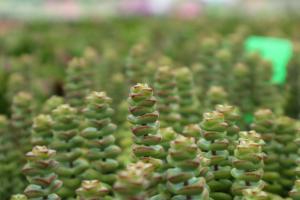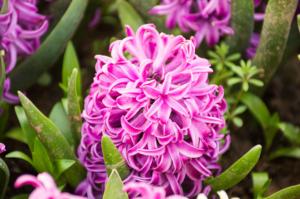What type of plant is a rubber tree?
A rubber tree, or Hevea brasiliensis, is a tropical plant species that is commonly grown for the latex contained in its bark. This latex is used in the production of a wide variety of consumer goods, including tires, gloves, adhesives, and elastic bands.
Physical Characteristics of a Rubber Tree
Rubber trees can grow up to 30 meters tall, with a straight trunk and sparse branches. They have delicate, ovate leaves that are dark green and shiny on top, and a lighter green on the bottom. The tree's flowers bloom in clusters, and the fruits they produce resemble small, prickly apples.
The bark of a rubber tree contains a white, milky sap that is used to produce natural rubber. This sap can be harvested by making a diagonal cut in the bark with a tapping knife, and then collecting the latex as it drips out of the cut.
History of Rubber Trees
The rubber tree is native to the Amazon rainforest region of South America, where indigenous tribes had been using the latex for centuries prior to European discovery of the area. In 1736, French explorer Charles de la Condamine brought samples of the latex back to Europe, where it was quickly recognized as a valuable resource.
It wasn't until the 19th century, however, that rubber plantations were established outside of South America. The British established plantations in Malaysia and Sri Lanka, while the Dutch founded plantations in Indonesia. These plantations became the primary source of natural rubber for the world market.
Cultivation of Rubber Trees
Rubber trees are typically grown in tropical regions where temperatures range from 20-34°C (68-93°F) and rainfall is high (at least 1,500 mm annually). The trees are usually grown in rows or in a plantation setting, and require relatively little maintenance aside from regular tapping of the latex.
In order to ensure sustainable production, rubber trees are typically intercropped with other species such as coffee, cocoa, or bananas. This helps to promote soil health and prevent the spread of disease and pests.
Rubber Trees Today
Today, rubber trees are still an important source of natural rubber, though synthetic rubber has largely replaced it in many applications. However, there remains a high demand for natural rubber in certain industries, such as tire manufacturing.
As the demand for natural rubber continues to grow, there is concern about the environmental impact of rubber plantations. Deforestation and chemical runoff from plantation operations can have negative effects on local ecosystems and communities. Efforts are being made to promote sustainable and environmentally-friendly rubber production practices.
Conclusion
The rubber tree is a fascinating plant species that has played an important role in the global economy for centuries. From its indigenous use in South America to its widespread cultivation around the world, the rubber tree has had a significant impact on human history. Today, as we seek to balance the economic benefits of natural rubber production with the need to protect the environment, the rubber tree remains a species of great importance and interest.

 how many times do yo...
how many times do yo... how many planted tre...
how many planted tre... how many pine trees ...
how many pine trees ... how many pecan trees...
how many pecan trees... how many plants comp...
how many plants comp... how many plants can ...
how many plants can ... how many plants and ...
how many plants and ... how many pepper plan...
how many pepper plan...






























